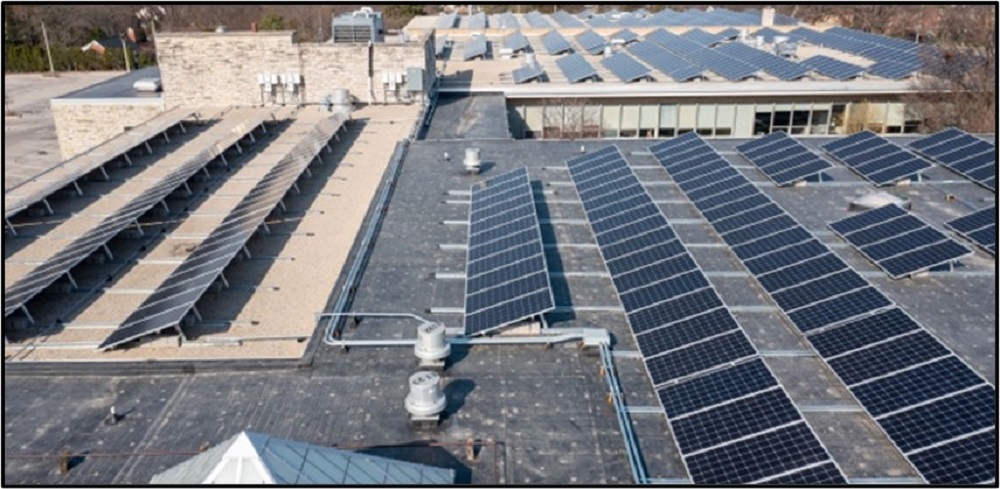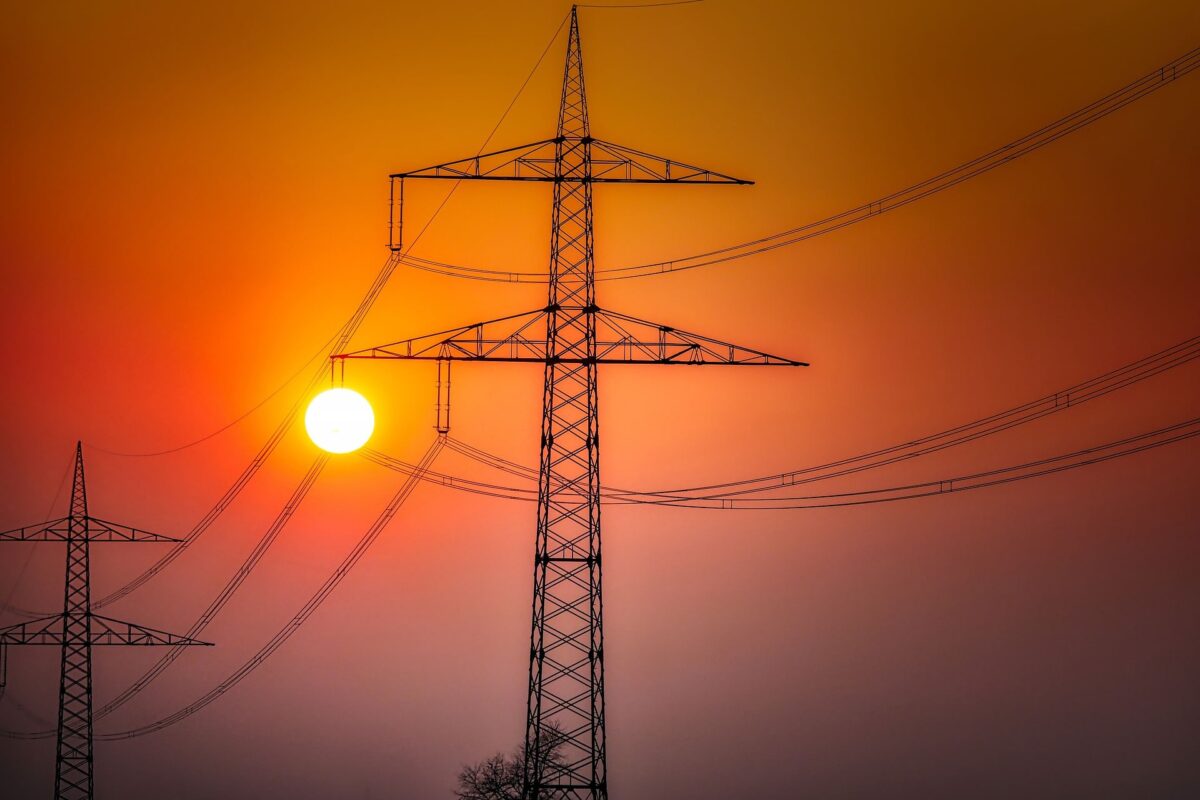A 389 kW solar array installed on the rooftop of Wauwatosa City Hall, Wisconsin’s is providing energy equivalent to 55% of the city complex’s total annual use, reducing carbon emissions by 358 tons.
The city made a commitment in 2010 to cut emissions in half by 2030 and achieve carbon neutrality by 2050, and recently made the decision to power city hall with solar. The city hall complex includes government offices plus the local civic center and public library. The complex has a flat roof area of just under an acre, perfect for rooftop solar, but challenges included shading on parts of the roof as well as Wisconsin snowy weather. Arch Solar C&I was selected as the installer after convincing the council that the solar system would provide enough clean energy to help Wauwatosa meet its green goals, while offsetting upfront costs through a fast ROI.
The installation features 1036 Boviet solar modules with SolarEdge P860 Power Optimizers and three SolarEdge three-phase inverters. The SolarEdge solution provides Maximum Power Point Tracking (MPPT), ensuring that if the shading on the roof causes one or more modules underperform, the other modules on the same string will not be affected.
“There are a lot of trees and buildings surrounding the City Hall complex. With a traditional string inverter system, even if just one or two modules are shaded, the performance of the entire sting is reduced. With SolarEdge, even if sections of the array are impaired, the rest of the modules continue to generate power at full capacity, ” said J..D. Smith, head of business development for Arch Solar C&I.
Because Wauwatosa is in snow country, Arch Solar chose to mount its rooftop modules at a 20 degree angle rather than the industry standard 10 degrees, which helps the system accommodate lower sun angles and reduce snow accumulation, contributing to greater energy production.
To build the array, the city received a $40,000 Wisconsin Focus on Energy Grant and came in under the Common Council budget. In the last twelve months, the 1036-module array generated 458,011 kWh of clean energy, putting Wauwatosa on track to cut carbon emissions by 50% by 2030. To share its achievement with the local community as well as other stakeholders, the Council has launched a live dashboard where anyone can see how much electricity is being generated.
The SolarEdge’s Monitoring Platform provides system users with real-time performance data down to the module level. Any drop in energy production, due to shading or faults, is instantly pinpointed and reported to the maintenance team, enabling fast remediation and increasing system uptime.
Finally, SolarEdge keeps projects safe by complying with the latest NEC 2017 and 2020 requirements for Arc Fault Circuit Protection (AFCI) and Photovoltaic Rapid Shutdown System (PVRSS). The entire system comes with a built-in SafeDC feature, which is designed to automatically reduce voltage to a safe level when required, providing protection to the installation crew and maintenance personnel. This also helps enable quick and safe inspection and maintenance while limiting system disruption.
This content is protected by copyright and may not be reused. If you want to cooperate with us and would like to reuse some of our content, please contact: editors@pv-magazine.com.









By submitting this form you agree to pv magazine using your data for the purposes of publishing your comment.
Your personal data will only be disclosed or otherwise transmitted to third parties for the purposes of spam filtering or if this is necessary for technical maintenance of the website. Any other transfer to third parties will not take place unless this is justified on the basis of applicable data protection regulations or if pv magazine is legally obliged to do so.
You may revoke this consent at any time with effect for the future, in which case your personal data will be deleted immediately. Otherwise, your data will be deleted if pv magazine has processed your request or the purpose of data storage is fulfilled.
Further information on data privacy can be found in our Data Protection Policy.